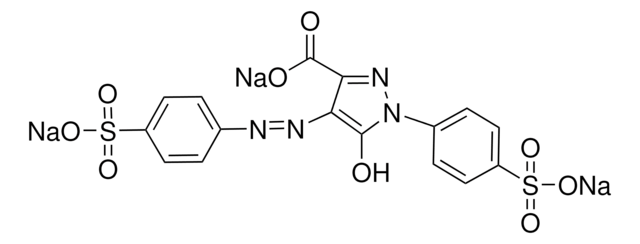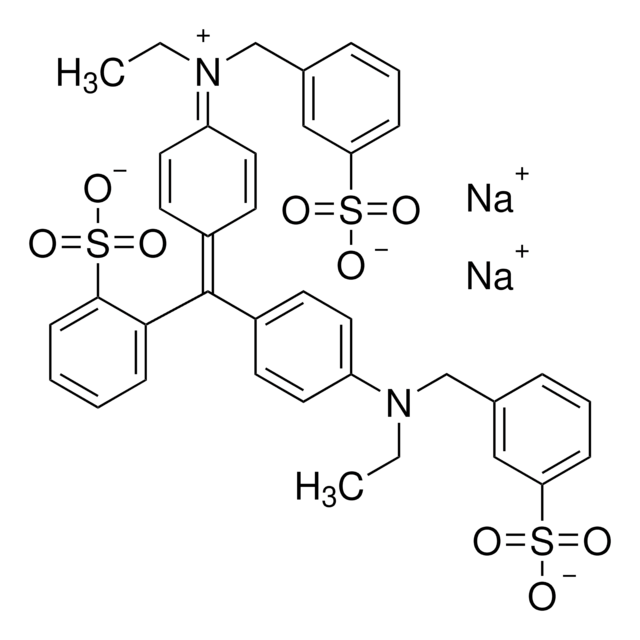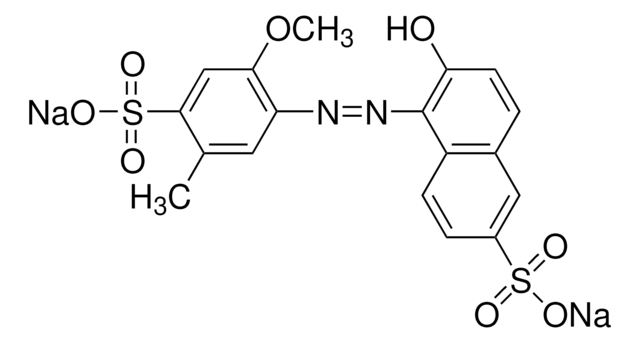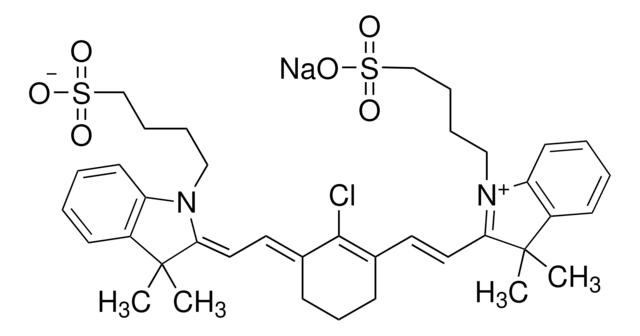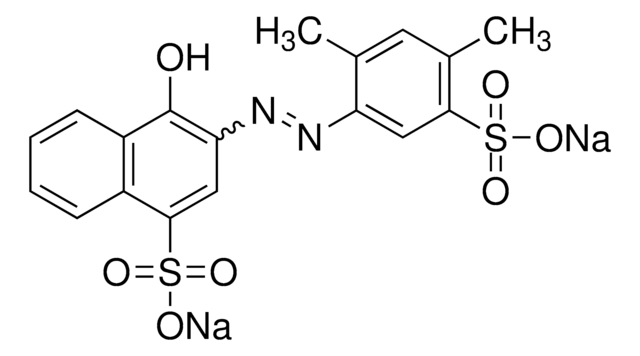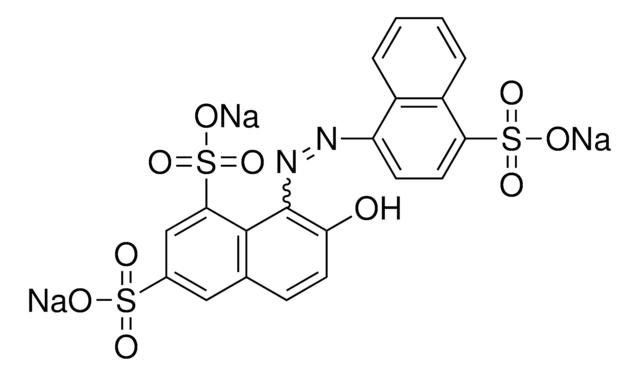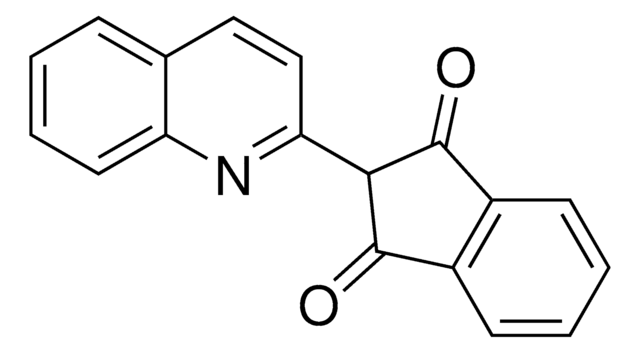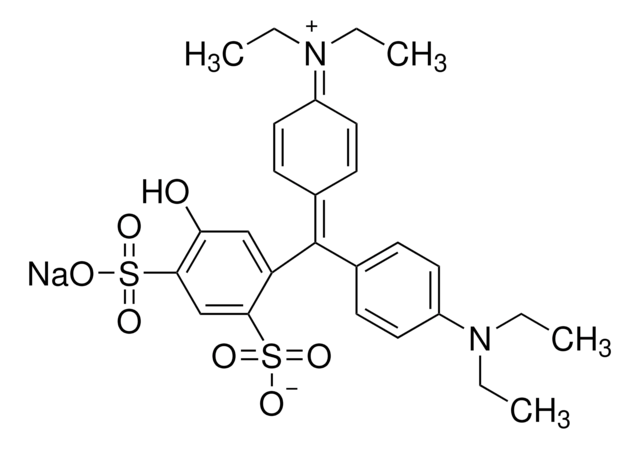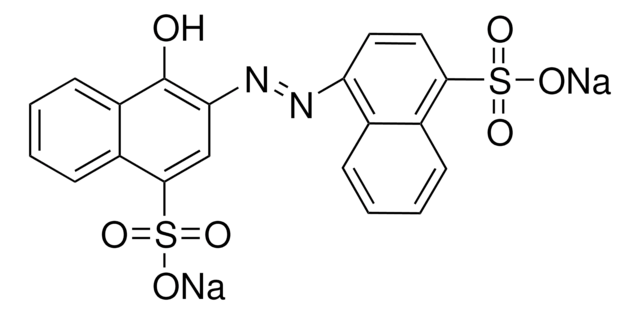T0388
Tartrazine
Dye content ≥85 %, Powder
Synonyme(s) :
Acid Yellow 23
About This Item
Produits recommandés
product name
Tartrazine, Dye content ≥85 %
Forme
powder
Niveau de qualité
Composition
Dye content, ≥85%
Technique(s)
titration: suitable
Couleur
orange
Solubilité
H2O: 10 mg/mL, clear, yellow to orange
Densité
2.12 at 20 °C
εmax
435-500 at 425-429 nm in water
Application(s)
diagnostic assay manufacturing
hematology
histology
Température de stockage
room temp
Chaîne SMILES
[Na+].[Na+].[Na+].[O-]C(=O)C1=NN(c2ccc(cc2)S([O-])(=O)=O)C(=O)C1N=Nc3ccc(cc3)S([O-])(=O)=O
InChI
1S/C16H12N4O9S2.3Na/c21-15-13(18-17-9-1-5-11(6-2-9)30(24,25)26)14(16(22)23)19-20(15)10-3-7-12(8-4-10)31(27,28)29;;;/h1-8,13H,(H,22,23)(H,24,25,26)(H,27,28,29);;;/q;3*+1/p-3
Clé InChI
UJMBCXLDXJUMFB-UHFFFAOYSA-K
Vous recherchez des produits similaires ? Visite Guide de comparaison des produits
Description générale
Application
The application of Tartrazine is seen in the phloxine-tartrazine procedure for cellular inclusions such as viral aggregates and eosinophil granules. It may be used as a substitute for orange G in a variant of Mallory′s trichrome, and in a methyl violet-tartrazine mixture to stain cryptosporidia in faecal smears and mucosal scrapings.
Code de la classe de stockage
11 - Combustible Solids
Classe de danger pour l'eau (WGK)
WGK 1
Équipement de protection individuelle
dust mask type N95 (US), Eyeshields, Faceshields, Gloves
Certificats d'analyse (COA)
Recherchez un Certificats d'analyse (COA) en saisissant le numéro de lot du produit. Les numéros de lot figurent sur l'étiquette du produit après les mots "Lot" ou "Batch".
Déjà en possession de ce produit ?
Retrouvez la documentation relative aux produits que vous avez récemment achetés dans la Bibliothèque de documents.
Les clients ont également consulté
Protocoles
Separation of Tartrazine; Amaranth; Indigo carmine; New Coccine; Sunset Yellow FCF; Allura Red AC; Fast Green FCF; Erioglaucine disodium salt; Erythrosin B sodium salt; Phloxine B; Rose bengal
Notre équipe de scientifiques dispose d'une expérience dans tous les secteurs de la recherche, notamment en sciences de la vie, science des matériaux, synthèse chimique, chromatographie, analyse et dans de nombreux autres domaines..
Contacter notre Service technique